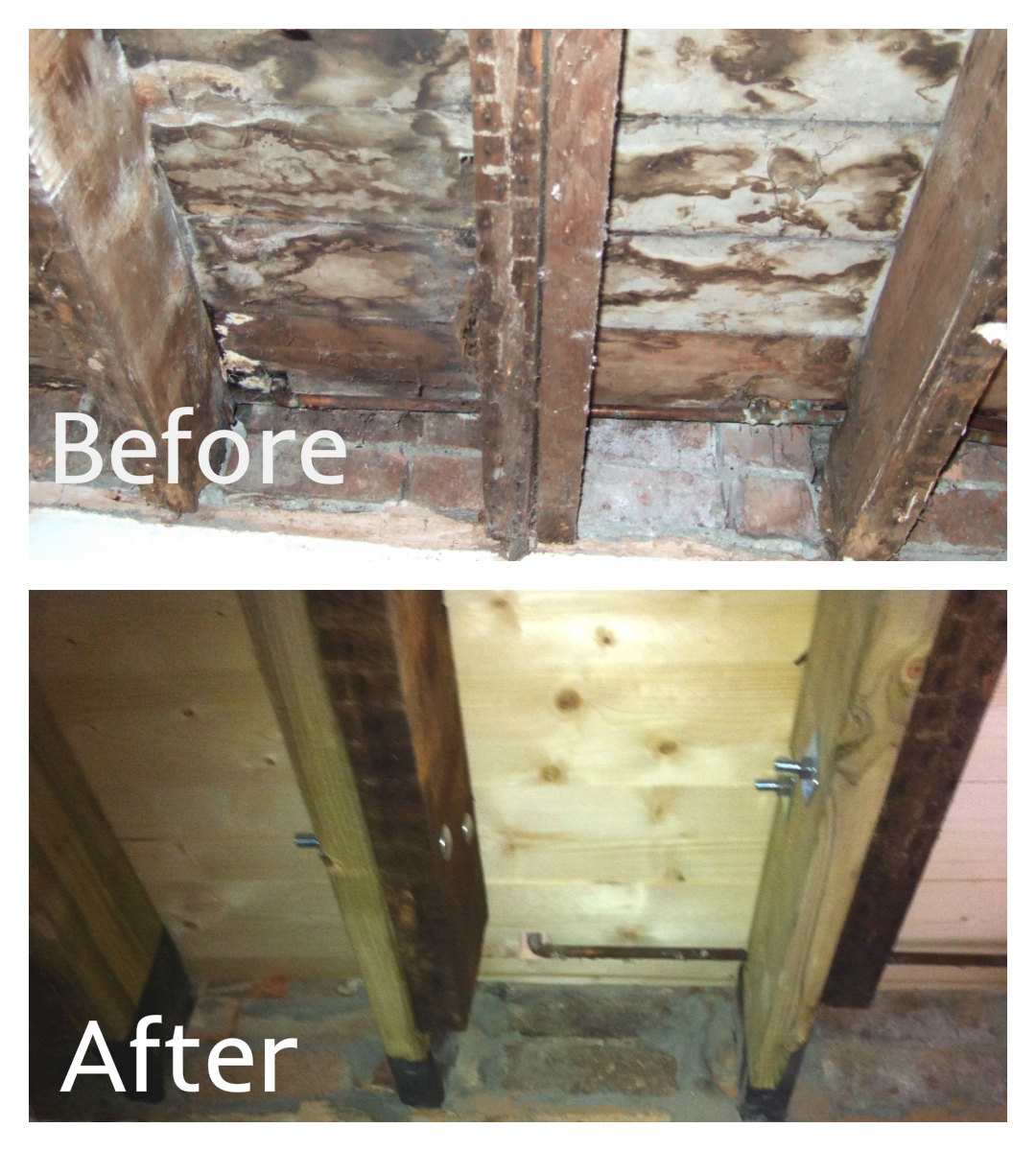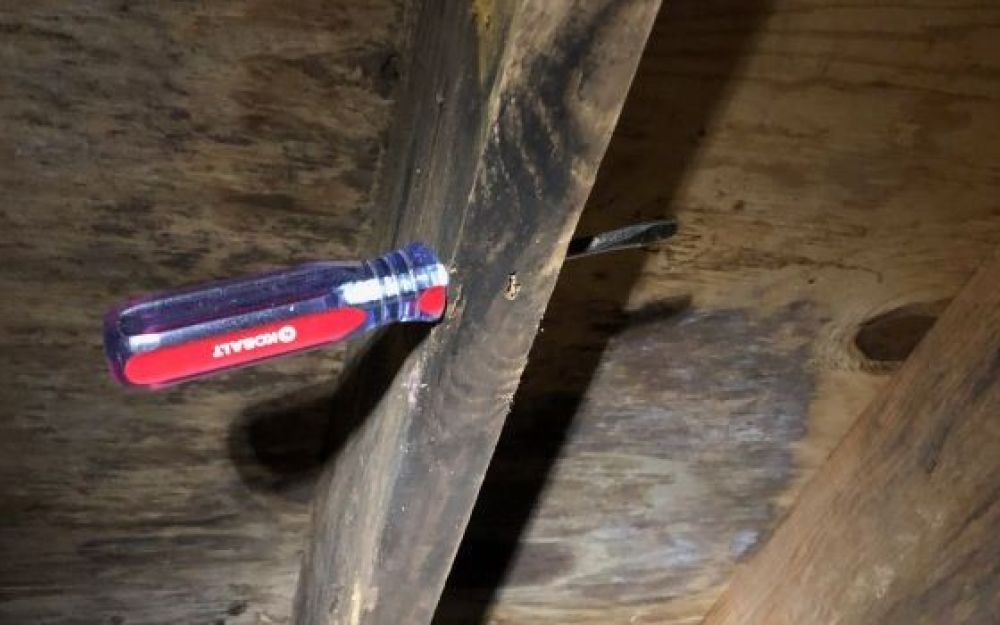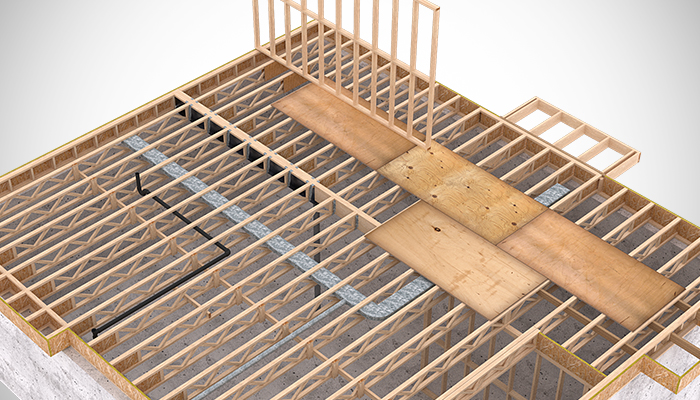Water-damaged floor joists are a serious issue that can compromise your home’s structural integrity and safety. Left untreated, this problem can lead to sagging floors, mold growth, and costly repairs. Whether the damage is from a leak, flooding, or high humidity, repairing floor joists promptly is crucial. In this guide, we’ll cover everything you need to know about identifying, repairing, and preventing water damage in floor joists.
What Are Floor Joists and Why Are They Important?

Floor joists are horizontal structural members that support the flooring and distribute weight evenly across the foundation. They are a critical part of your home’s framework, ensuring stability and preventing sagging or uneven floors.
When water damage occurs, the integrity of the joists can weaken, leading to structural problems that can impact your home’s safety and resale value.
Common Causes of Water Damage in Floor Joists
- Plumbing leaks from pipes, drains, or fixtures.
- Flooding caused by heavy rain, storms, or burst pipes.
- High humidity levels in basements or crawlspaces.
- Poor drainage around the foundation, allowing water to seep in.
- Condensation from HVAC systems or appliances.
Signs of Water Damage in Floor Joists
Identifying water damage early can save you time and money. Here are some common warning signs:
- Sagging or Uneven Floors: A noticeable dip or bounce when walking on the floor.
- Mold or Mildew: Visible mold growth or a musty odor near the floor joists.
- Wood Rot: Discoloration, softness, or crumbling wood in the joists.
- Insect Activity: Termites and carpenter ants are attracted to damp wood.
- Water Stains: Dark spots or streaks on the wood.
Common Signs of Floor Joist Water Damage

| Sign | Description |
|---|---|
| Sagging Floors | Uneven or soft spots when walking across the floor. |
| Visible Mold | Fungal growth or musty odors near the joists. |
| Wood Rot | Soft, crumbling, or discolored wood. |
| Insect Damage | Presence of termites or carpenter ants in damp wood. |
| Water Stains | Dark spots or streaks on the joists. |
Step-by-Step Guide to Repairing Floor Joists with Water Damage

Step 1: Assess the Extent of the Damage
Begin by inspecting the floor joists for visible signs of damage. Use a screwdriver or awl to check for softness or rot. If the damage is extensive, consider consulting a structural engineer or professional contractor.
Citywide Mold Mitigation can assist with mold inspections and moisture evaluations for accurate assessments.
Step 2: Remove the Source of Water
Fix any plumbing leaks, improve drainage, or address high humidity levels to prevent further damage. Ensure the area is completely dry before proceeding with repairs.
Step 3: Replace or Sister the Joists
Depending on the extent of the damage, you can either replace the damaged joists or sister them. Sistering involves attaching a new joist alongside the damaged one to provide additional support.
Materials Needed:
- Pressure-treated lumber (for new joists or sistering)
- Construction adhesive
- Bolts or nails
- Wood screws
Steps for Sistering Joists:
- Cut a new joist to match the length of the existing one.
- Apply construction adhesive to the side of the damaged joist.
- Place the new joist alongside the damaged one and secure it with bolts or nails.
- Ensure the sistered joist is level and properly aligned.
Step 4: Treat for Mold and Rot
Apply a fungicidal spray or wood treatment to kill any remaining mold and prevent further rot. For severe cases, contact Citywide Mold Mitigation for professional mold remediation services.
Step 5: Reinforce and Seal
After repairs, reinforce the floor joists with metal brackets or additional support beams. Seal the area with a vapor barrier or waterproof coating to protect against future water damage.
How to Prevent Water Damage to Floor Joists

Preventing water damage is always more cost-effective than repairs. Here are some tips to protect your floor joists:
- Maintain your plumbing system and fix leaks promptly.
- Install a dehumidifier in basements or crawlspaces to control humidity.
- Ensure proper drainage around your home’s foundation.
- Use vapor barriers or insulation to prevent condensation buildup.
- Inspect floor joists regularly for early signs of damage.
FAQs About Repairing Floor Joists with Water Damage
| Question | Answer |
|---|---|
| Can I repair floor joists myself? | Yes, minor repairs like sistering can be done by experienced DIYers, but severe damage may require professional help. |
| How much does it cost to repair floor joists? | The cost ranges from $500 to $10,000 depending on the extent of the damage and repair method. |
| What type of wood is best for replacement joists? | Pressure-treated lumber is ideal because it resists moisture and decay. |
| Does insurance cover floor joist repairs? | Homeowners insurance may cover repairs if the water damage is from a covered event like a burst pipe. |
| How do I know if floor joists are structurally sound? | A professional inspection can confirm the structural integrity of your floor joists. |
Conclusion: Protect Your Home’s Foundation
Repairing floor joists with water damage is a critical step in maintaining your home’s safety and value. By addressing the damage promptly and implementing prevention strategies, you can avoid costly repairs and ensure your home remains structurally sound. For professional mold and water damage solutions, trust Citywide Mold Mitigation. Contact us today to schedule an inspection and take the first step toward a safer home.

